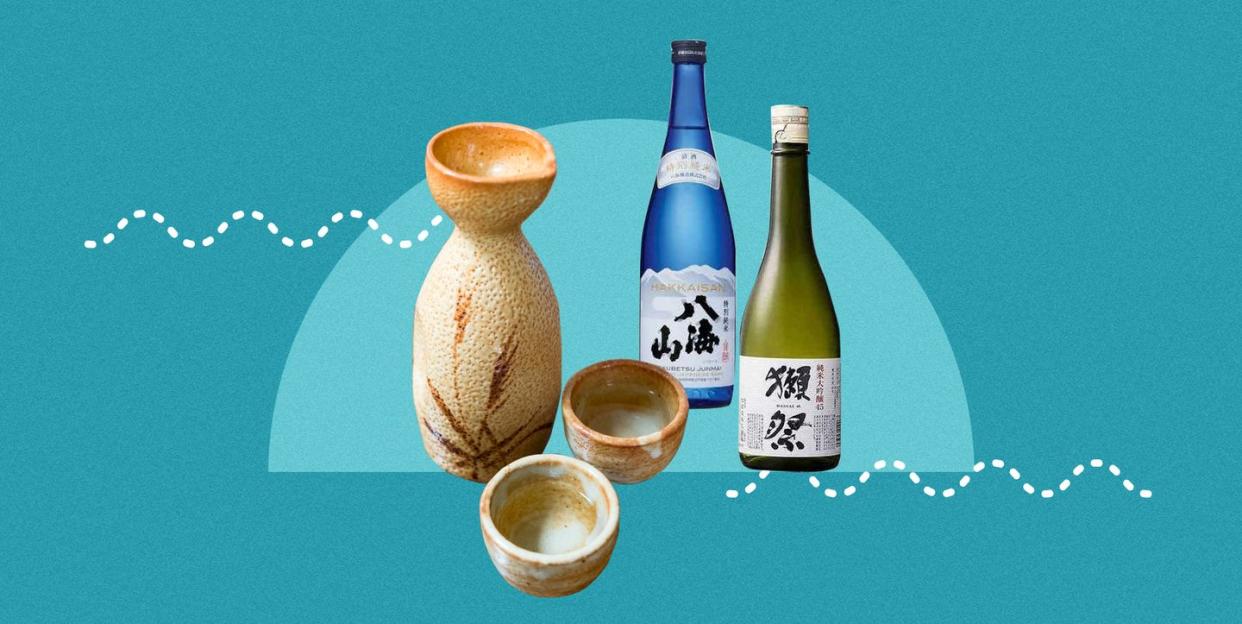A Guide To Sake — Including How To Drink It The Right Way

The world of sake, Japan's national drink, is vast and fascinating. There are many different flavor profiles and breweries to explore. Learning about all the varieties of sake and what makes them unique can seem daunting at first. But considering the worldwide popularity of the sake and how many bars and restaurants are dedicated to the enjoyment of the spirit, it's worth getting to know. Here's everything you need to know about sake.
What is sake?
Sake is a Japanese alcoholic beverage made from fermented rice. It consists of four ingredients: rice, water, yeast, and a mold called koji. You can't make sake with just any type of rice, though. "A special rice called sakamai is used for making sake," said Cho Shintaro, manager at Sake Bar Decibal in New York City. "Koji is the mold that is carefully distributed over the rice to convert the starches to sugar." This process, along with the different yeasts and the varying quality and minerality of water around Japan, shapes the flavor profile of sake.
What are the different types of sake?
The different types of sake are categorized by their rice polish ratio (RPR) and the addition of brewer's alcohol. RPR is indicated by a percentage. For example, if a sake has an RPR of 60 percent, then 40 percent of the rice's outer layer was polished away. The amount of the protein and fat on a rice grain that is polished away, leaving mostly starch, will influence the flavor of the sake. Then, to brew it into alcohol, something called saccharification has to happen. This is when the starches are converted into sugar.
Here's how Shintaro breaks down the different categories of sake:
Junmai: no regulation of RPR with added brewer's alcohol, varies in flavor.
Daiginjo: at least 50 percent RPR, fruity and light in flavor.
Ginjo: at least 60 percent RPR, slightly fruity in flavor.
Honjozo: 70 percent RPR with added brewer’s alcohol, earthy in flavor.
Futsushu: means “ordinary sake,” the table wine of sake, has no regulations.
Nigori: called cloudy sake, has particles of solid rice suspended in the sake, normally served chilled.
How do you drink sake?
Sake can be enjoyed at different temperatures. "Some sake is best served warm/hot, others are best served chilled, and many can be enjoyed at different temperatures," Shintaro said, adding that the temperature is really up to whomever is drinking.
"For cold sake, we recommend drinking with a glass that has a thin and wide rim, [which is] good for sake with high acidity," he continued.
When drinking warm sake, he recommends using traditional Japanese sake cups called Ochoko, "which have a narrow rim and are good for umami and rich sake."
What food pairs well with sake?
Light and dry sake goes well with sashimi, sushi, and other light food.
Light and sweet sake goes well with fish, shrimp, and lightly fried dishes.
Rich and dry sake pairs wonderfully with hearty meat dishes.
Rich and sweet sake goes well with soy-based dishes.
For more specific pairings, Shintaro likes high-acid nigori sake with beef tartare, while rich and fruity sake goes well with carpaccio. Looking for something to sip on with a charcuterie board? Try the rich and savory Koshu, or aged sake, which is perfect to drink with cheese.
What sakes should you try?
You Might Also Like

